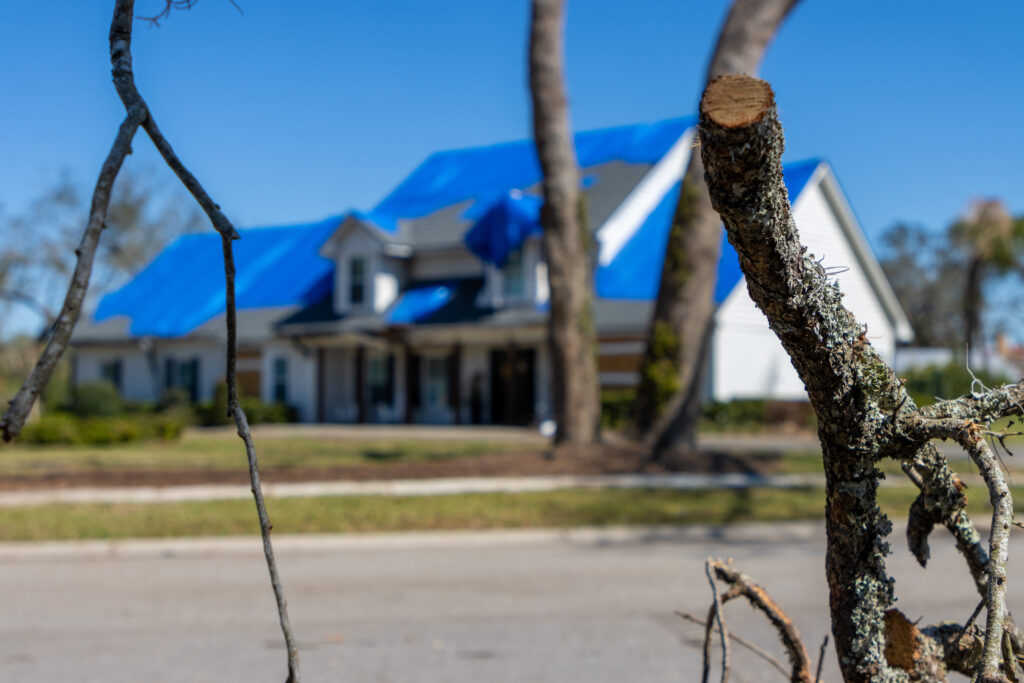Why Securing Your Property After a Disaster is Critical
Posted October 2, 2025

When a home is struck by a fire, flood, storm, or other disaster, the first priority is always safety. Once everyone is out of immediate danger, one of the most critical steps a homeowner can take is to secure the property. This step often determines how much additional loss is prevented, how smoothly the insurance claim proceeds, and how quickly the restoration process can begin.
Securing your property is not just precautionary, it is essential.
Preventing Further Damage
After a disaster, a property is often left exposed to the elements. A missing section of roof, shattered windows, or broken doors can quickly invite rain, snow, and wind inside. In Canada’s climate, where conditions can shift dramatically, even a short delay can allow water infiltration or freezing temperatures to worsen the damage.
Tarps and board-ups provide a temporary but effective barrier. These measures stop moisture from seeping into walls and ceilings, help prevent mould from developing, and keep structures from deteriorating further before permanent repairs are made.
Reducing Safety Hazards
A damaged property is often an unsafe one. Sharp debris, compromised structures, exposed wiring, and even contaminated water all create risk. By stabilizing and securing the building, contractors help minimize hazards to homeowners, neighbours, and anyone who may come near the property.
Temporary fencing, proper signage, and professional board-up techniques are often used to keep the area safe until a full restoration plan can be carried out.
Protecting Against Theft and Vandalism
An unsecured home can unfortunately become a target for trespassers. Vacant or damaged properties are vulnerable to break-ins, theft of valuables, and vandalism. By boarding up doors and windows and installing temporary locks or barriers, contractors ensure the property is not only protected from the elements but also from people with bad intentions.
Meeting Insurance Requirements
Canadian insurers generally require homeowners to take reasonable steps to mitigate additional losses after a disaster. This means that if a homeowner fails to secure the property and more damage occurs, an insurance company may reduce or even deny parts of the claim.
Professional restoration contractors document all securing measures, often with photos and reports, to support the insurance process. This documentation shows that the homeowner acted responsibly and did everything possible to limit further damage.
Limiting Legal and Liability Concerns
If someone is injured on an unsecured property, the homeowner may be held liable. This could include trespassers, curious passersby, or even utility workers. By boarding up access points and making the property safe, liability risks are significantly reduced. Municipalities can also issue enforcement notices if a damaged property poses a public safety hazard, so timely securing prevents unnecessary legal issues.
Protecting Contents and Personal Belongings
Even when structural damage is severe, many personal belongings inside a home may still be salvageable. Electronics, furniture, clothing, and sentimental items can often be restored if they are kept safe from the elements and secured from theft. Proper board-up and tarping services help ensure these items are preserved until professional contents restoration can begin.
Peace of Mind During Recovery
The period after a disaster is overwhelming. Between coordinating with insurers, arranging temporary housing, and supporting family members, homeowners are under enormous stress. Knowing that the property is secured provides peace of mind. It allows families to focus on recovery, knowing their home and belongings are protected while the restoration process moves forward.
Regional Realities in Canada
Securing property is especially important in Canada, where natural conditions can quickly turn minor damage into a major disaster.
- In British Columbia, windstorms and heavy rains can cause roof damage and water intrusion.
- In Ontario and Quebec, ice storms often break windows and compromise structures.
- On the Prairies, wildfires and sudden storms leave homes exposed to both weather and trespassers.
No matter the region, securing a property immediately is a critical first step in recovery.
The Role of Professional Restoration Contractors
While some homeowners may attempt to cover openings themselves, professional restoration contractors bring both experience and safety to the process. They use specialized materials, ensure compliance with local codes, and provide the documentation insurers require. This expertise ensures the property is stabilized properly, preventing risks that could lead to greater costs or delays later.
How EMRG Members Support Property Owners
Across Canada, EMRG members provide this essential service as part of their commitment to excellence. Our members are vetted restoration contractors who bring proven expertise, strong reputations, and industry certifications to every project.
By securing properties quickly and effectively, EMRG members help protect homeowners from additional loss, reduce liability, and ensure the recovery process begins on solid footing. When disaster strikes, knowing that a trusted EMRG member is handling your property means confidence, safety, and peace of mind.
Securing your property after a disaster is the foundation of recovery. With the right steps taken quickly, homeowners can prevent further damage, protect what matters most, and move forward knowing their home is in good hands.
Contact EMRG Canada 24/7 at 1-844-344-3674.

